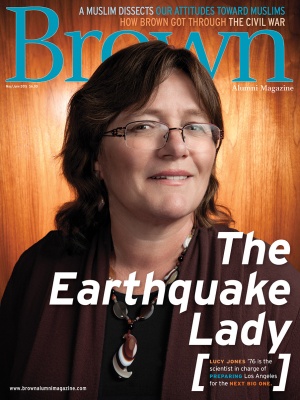The intersection of art and science has a long history—da Vinci was probably the most well known practitioner of this renaissance sport of the mind (“Art and Science,” March/April). Professor Leon Cooper’s essay made me wonder what a gallery of scientists’ doodles and drawings might look like, from Einstein to Feynman to Marconi and everyone else. Can the List Art Gallery put on such a show? That would be electric.
Matthew Rose ’81
Comment from brownalumnimagazine.com
I love this! Thank you for sharing it.
Diana Edensword Conway ’87
Comment from brownalumnimagazine.com
Thank you for the very interesting essay by Professor Leon Cooper. Cooper highlights the fact that science is an art, as in the example of Galileo’s creative approach to his discovery. I think that statement can be flipped around too, though: art, on a fundamental level, is a science. To play very technical music, one needs to be able to analyze a piece mathematically and structurally, as well as aesthetically.
Johnny Page ’17
Comment from brownalumnimagazine.com
Professor Cooper’s comparison of the approaches followed by Galileo, Newton, and Einstein for falling bodies is interesting. Then, drawing the parallelism with art from examples of paintings of Monet and those of the Renaissance period is even more interesting. It is fascinating to think of these creativities in a comparative way.
Debendra K. Das ’74 ScM
Comment from brownalumnimagazine.com
I like your point about abuse of arts and sciences by Big Government! As both a scientist and an artist, I very much appreciated your connecting the two via creativity and perspective. Many thanks!
Sarah Medearis ’85 ScM
Comment from brownalumnimagazine.com




